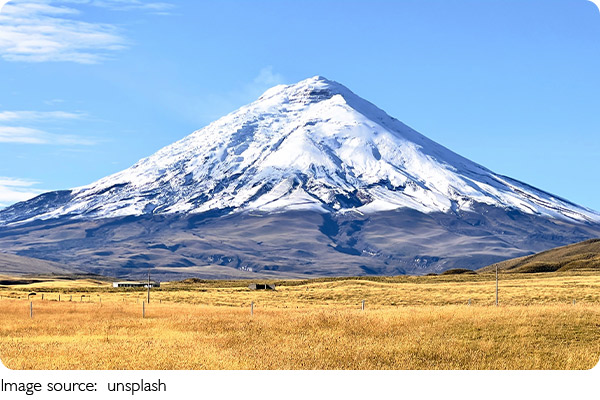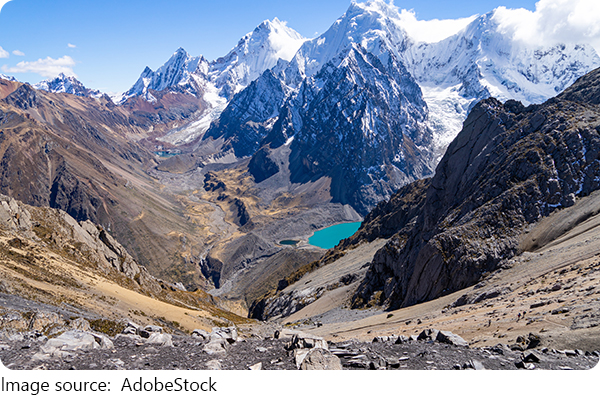What’s Hiding In The Andes?

Every corner of the planet hides something extraordinary, and El Tatio is one of those rare treasures that stuns even the most seasoned explorers.
Dear Lykkers, in the far reaches of northern Chile lies a steaming plateau that offers surreal views, dramatic geothermal phenomena, and a glimpse into the planet’s dynamic inner forces.
Geothermal Marvel in the Andes
The Location and Altitude
Nestled at an elevation of around 4,300 meters above sea level, El Tatio sits in the Andean highlands near the border with Bolivia. It's about 80 kilometers from San Pedro de Atacama and roughly 100 kilometers from Calama, in the Antofagasta Region of northern Chile.
This location makes it the highest geyser field in the world.
The Scale of El Tatio
Covering an area of about 30 square kilometers, El Tatio is one of the largest geyser fields on the planet. It accounts for nearly 8% of all known geysers and holds the title of the most extensive active geyser site in the Southern Hemisphere.
Morning Magic
The geysers are most active during the early morning hours, with columns of steam and boiling water shooting up to 10 meters high. The best time to witness this natural spectacle is between 6:00 and 7:00 AM, when the cold morning air intensifies the visibility of the steam.
The Geology Behind the Wonder
How It Works
El Tatio is located in a volcanically active zone formed by the subduction of the Nazca Plate beneath the South American Plate. This tectonic interaction created a series of stratovolcanoes and vast calderas that now feed the geothermal activity below the surface.
Heat Source and Water Path
Rainfall from surrounding areas filters underground and travels through a complex network of faults and aquifers. When this water comes into contact with magma-heated rocks, it turns to steam and erupts back to the surface through geysers and fumaroles.

The Surrounding Landscape
The entire field is framed by majestic Andean peaks, which add to the visual drama of the environment. These volcanoes play a key role in sustaining El Tatio’s secondary volcanic activity, continuously fueling its geothermal energy.
Thermal Features and Chemical Composition
Geysers and More
El Tatio hosts over 60 active geysers, bubbling hot springs, mud volcanoes, and fumaroles. The thermal waters maintain an average temperature near 85°C and emit thick columns of steam that can be seen from afar.
Water Chemistry
The thermal waters are rich in sodium chloride and silica. Other elements present in smaller concentrations include antimony, rubidium, strontium, magnesium, cesium, arsenic, sulfate, bromo, boron, calcium, potassium, and lithium. These waters eventually feed into the Rio Salado, which contributes to the Rio Loa basin.
Scientific Importance and Unique Ecosystem
Home to Extremophiles
One of the most intriguing aspects of El Tatio is its microbial life. The geyser mouths are inhabited by extremophiles—microorganisms that thrive in extremely hot environments.
Among them are hyperthermophiles, ancient single-celled organisms that offer clues about life on early Earth and possibly other planets.
A Glimpse into the Past—and Beyond
The environment at El Tatio has been used as a model for studying early Earth conditions. Some scientists also believe it could offer insights into the types of life that might exist on other planets, particularly Mars, due to the similar geology and climate of the two places.
Final Thoughts
El Tatio is not just a destination—it’s a journey through time, geology, and science. For Lykkers who love adventure, wonder, and the untamed beauty of nature, this geyser field is a breathtaking place that ignites the imagination. The surreal landscapes, unique ecosystem, and powerful geothermal activity make El Tatio a must-see marvel of South America.
-
 Sci-Fi Made RealThink teleportation is still fiction? These futuristic gadgets are here now—and some feel like they came straight from the movies.
Sci-Fi Made RealThink teleportation is still fiction? These futuristic gadgets are here now—and some feel like they came straight from the movies. -
 The Science of LearningUnderstanding how robots and machines learn, mimicking human cognition and self-optimization.
The Science of LearningUnderstanding how robots and machines learn, mimicking human cognition and self-optimization. -
 Seeking Life BeyondHow Close Are We to Finding Extraterrestrial Life? A Look at Current Efforts and Technology
Seeking Life BeyondHow Close Are We to Finding Extraterrestrial Life? A Look at Current Efforts and Technology